Rodney Strong started a career in winemaking in California after having retired from dancing at the Lido in Paris. The Foppiano family came to California during the gold rush but did not find any gold. Instead they bought some land and planted vines. Both are today successful Californian wineries. BKWine’s Ulf Bengtsson reports from a tasting of the wines.
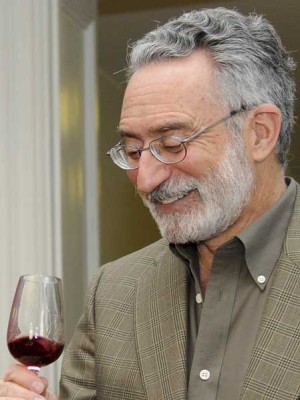
Recently I was invited to a tasting of Californian producers Rodney Strong and Foppiano. The tasting was held at the offices of Domaine Wines, their Swedish importer. It was led by Steve Messinger, representative for both Rodney Strong and for Foppiano.
After a quick contemplation of life’s unpredictabilities, such as leaving a sunny and spring-warm California and landing in the definite sub-zero temperature land of Sweden, Steve starts off by framing the specifics of the geology and climate of northern California.
Ocean beaches and extinct volcanoes
“What makes Sonoma County so interesting”, Steve notes, “is that it is bordered by the ocean and old extinct volcanoes. So there is this interesting combination in Sonoma County of old seabed that has risen over the years and volcanic activity from these extinct volcanoes.”
This combination, old seabed and extinct volcanoes, provides for a terroir that is hugely varied. Some geologists even argue that there are more different soil types in Sonoma County than in all of France. This may sound puzzling to visitors, especially from France.
A myriad of soils but no bikini girls
How can you possibly make Cabernet and Pinot Noir in the same place? Just not possible, right? Well you need to understand the soil, you need to come to the vineyards and understand the differences. It is not uncommon to have twenty different soil types within a ten hectare vineyard.
Turning to climate, California needs no introduction. But, as Steve points out, “California is a long, long coast, and everybody has the image of girls in bikinis running on the beach, Baywatch… That’s southern California. Very different than northern California.”
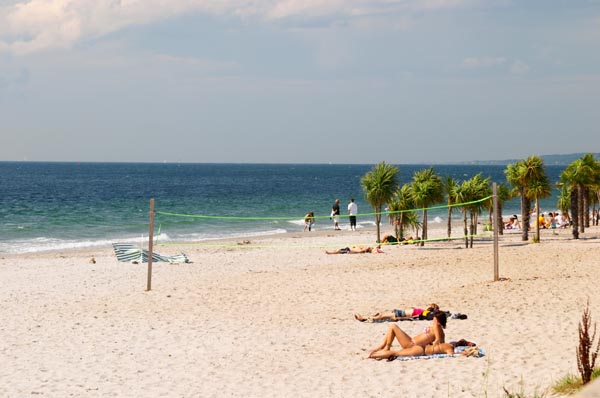
The vineries of Foppiano and Rodney Strong are both an hour and a half north of San Francisco, so about 80 kilometers north. The northern part of California is much cooler than the southern part. But that does not mean that crops grow at a lesser speed. The problem is basically the reverse; grapes seem to thrive almost too well in California, so grape growers have little motivation to question if they are really growing the right types of grapes on the right plots.
The economic imperative: appellations or wine entrepreneurs
As Steve observes, “what we have learned over the years is that when you plant grapes in California they tends to grow really well. It may not always turn into exactly what you want, so then it becomes the challenge to saying, ‘OK, I make pretty good chardonnay here, but if it were cabernet it would be so much better.’ When does the economic imperative say, it is time to make the change?”
This highlights a defining line between wine making in Europe and the US, as Steve notes. In Europe the rules of the appellations are determined by a state or a governing body. In the US, if you plant the wrong grape, you’re out of business. So the logic is that wine makers in the US tend to grow grapes that are most suited for the terroir. However, as pointed out above, this is not always the case.
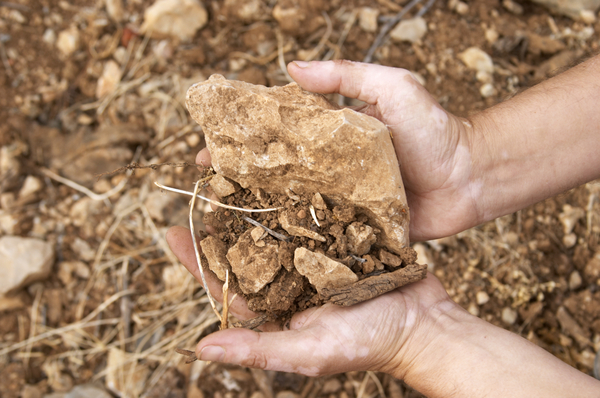
The renaissance of California wine
Grapes have been grown in Sonoma County since the early 1800s. The origin of the Californian wine industry was Swiss and Italian immigrants who came to California during the gold rush. Those who did not make their fortune in gold turned to what they knew, which was growing grapes. Thus the Californian wine industry was born.
The prohibition period between 1915 and 1935 naturally brought the wine business to almost a standstill, as did WWII.
But then in the 1960s the economy started to grow. People started to grow grapes again. So the period from 1960 till now is really the renaissance and the new way of thinking about wine in California.
Rodney Strong: from Lido dancer to lifetime winemaker
The first winery of the tasting is the Rodney Strong Winery. It is named after its founder, Rodney Strong, who was a very famous dancer in the 1950s. Famous among other things for dancing in Paris at the Lido. Dwelling on life after his dancing career, he concluded that there are no old dancers, but… there are old winemakers!
So legend has it that he started going down to Loire and to Bordeaux and to Burgundy, learning about wine. And when he finally came back to California in 1956 he started looking around for a vineyard. In 1959 he started his winery. In 1962 he settled in Sonoma County. He thought this was going to be the most interesting place to grow grapes because of the variety of grapes you could grow there. He was the first person who planted chardonnay in certain areas and pinot noir in certain other areas.
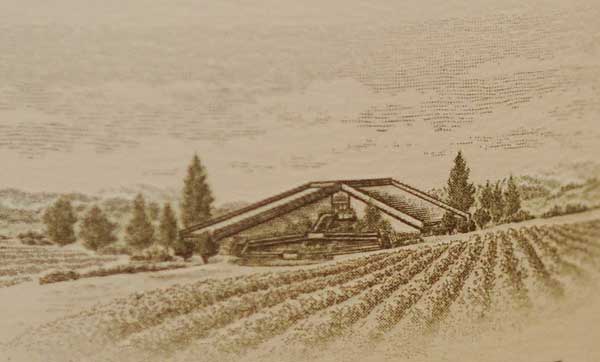
Over the years, as he developed the winery, he realized that he needed to find a partner to take the winery to the next level. He had no children. He met Tom Kline who had done some consulting for a big firm, and they started talking. Tom’s family was growing grapes in Central Valley, and the more they talked, the more they thought this could be good for everybody.
Finally Tom said, “okay, I would be interested in buying the winery but under one condition and one condition only”. He said: “Rodney, you have to stay in the winery until your death. You cannot go anywhere. This is your winery and I am only the caretaker. I want you to teach a new winemaker. You have a job for life.” This was more than Rodney thought would happen, so this was a relationship which started in 1989 and continued until the day that Rodney Strong passed away.
The concept of Rodney Strong is to make only Sonoma County wine. By Sonoma standards, the Rodney Strong Winery is a fairly large winery, but it is focused only on the grapes from Sonoma County. The winery owns about 600 hectares within the county which makes them one of the largest growers.
Foppiano
The other winery at the tasting is the Foppiano Winery. The Foppianos came from Genoa during the gold rush era but didn’t make their fortune in gold. They settled in Sonoma County and bought the property in 1896. Then they started making wine on it. It is now the fifth generation Foppiano farming in the exact same spot. The winery consists of about 60-70 hectares in the Russian River Valley of Sonoma County.
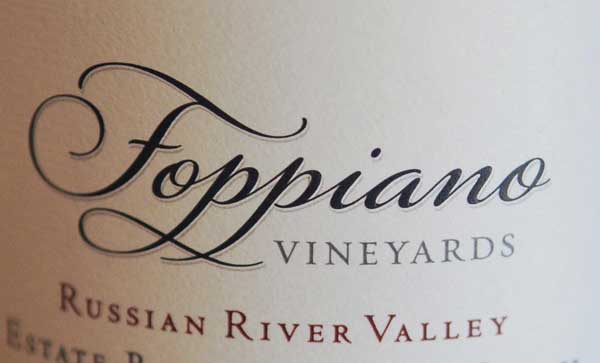
Their claim to fame is this grape that very few people know about called petite sirah. Petite sirah for the old Italians was a blending grape. You could put it into anything and it made up for if your cabernet was a little weak; if you needed a little colour in your pinot noir then you put some petite sirah in it. Well the Foppianos decided that you could make a really great wine out of petite sirah on its own.
What is this petite sirah? It is not syrah. It is its own unique grape. In France it is called durif. It makes a rich wine but if it is made incorrectly it can be very hard and very tannic. (It should not be confused with petite syrah, which often, but not always, refers to a variant of the syrah grape.)
What about the wines?
Wine 1: 2011 Rodney Strong Sonoma County Chardonnay
This is the beginner’s chardonnay from Rodney Strong. It is a blend of vineyards throughout the county, thus aiming at showing the county rather than a specific vineyard. Focus is on drinkability, capturing the fresh fruitiness, the crisp apple, but with hints of oak although not overpowering.
Of course it is difficult to mention Californian chardonnay and oak in the same sentence without people running for the door or grabbing the nearest blunt object good for throwing at you. But that was yesterday.
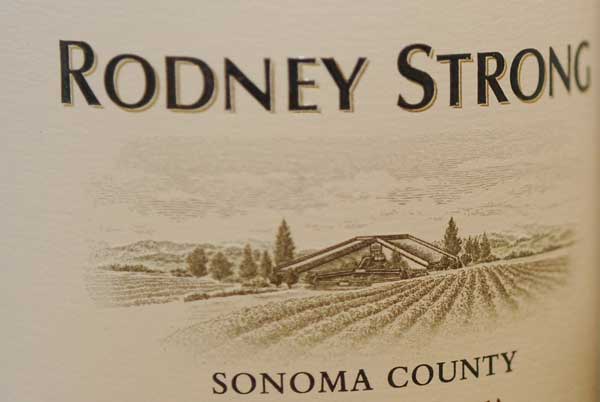
“For the most part,” Steve is eager to point out, “gone are the days of the stereotype of the wine that people have about California Chardonnay, big, buttery, oaky… We have not made those wines in twenty years. But stereotypes die hard.”
One of the most interesting things about wine growing and wine making is that terroir is always present. The concept of terroir is hard to grasp and elusive to demonstrate, but generally it boils down to being the influence of soil and location on the wine. Same grape, different locations, different wine.
Given the multi-facetted, abundantly varied geology of Sonoma County it is not easy to determine the boundaries of specific terroirs in Sonoma County. There is an AVA called Sonoma Coast, an AVA called Russian River Valley, and an AVA called Alexander Valley. All these can prove distinct and different.
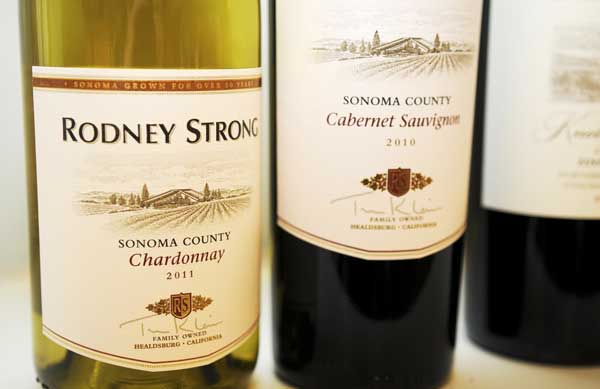
Steve continues by stating that he usually uses a Burgundy analogy to demonstrate the differences in Sonoma terroir: “You know that there is Meursault, that there is Morey St Denis, that there is Mâcon. All are places where chardonnay grows really well and they are all different. We are beginning to see those differentiations in California as well. This wine wants to teach us the combination of all those and put it in a blend. This wine is a combination of all these three.”
It is a nice wine. I find hints of candy, apple, fresh and fruity, weenie hints of butter. A little bit too much oak for my taste but that is just my personal taste. Nothing you could not live with. About 60 per cent of the wine is barrel fermented, 40 per cent stays in stainless steel tanks. A nice combination for this style of chardonnay. (Systembolaget 79363, 125 SEK / ~13 euro)
Wine 2: 2010 Foppiano Russian River Estate Pinot Noir
The second wine of the tasting is the 2010 Foppiano Russian River Estate Pinot Noir. The Foppiano winery is located in Russian River Valley, which has a reputation of being one of the finest places in California for growing pinot noir and chardonnay.
The Foppiano estate has about seventy hectares and it is located in the warmer section of the Russian River region. The pinot plot sits right on the river, which is the coolest part of the vineyard. Coolest, since the fog comes in during the summer and keeps everything very cool.
During the growing season temperatures reach 30 or even 35 degrees Centigrade during the day. But at five o’clock the wind starts to blow and fog comes in and the temperature can drop to ten degrees C. Steve chuckles about the unfortunate tourists coming up in shorts and t-shirts: at five o’clock when the temperature drops to ten degrees, “we sell a lot of sweaters at the tasting room at the winery at this time of year!”
But the cooling fog makes for great pinot noir. It has been argued that Russian River pinot noir, due to the cooling fog, have a little more grip than some of the other areas. They have a little more tannin structure in the back. But still beautiful fruit.
The Foppiano Russian River Estate Pinot Noir is a fairly new wine for Foppiano. The first vineyards with pinot noir were not planted until 1990. Prior to that they were planted with cabernet, which probably was absolutely the wrong decision. The economic imperative made the firm plant pinot instead and that has shown to be the right decision.
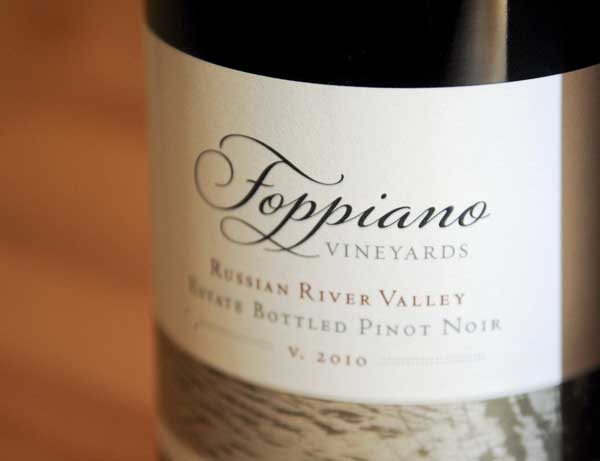
The wine is made with traditional Burgundian methods, such as open-top fermenters and no pumping over. The aim is of course to avoid harsh tannins coming through in the wine. Predominantly French oak is used. But wine maker Natalie West likes to experiment with a little bit of Hungarian oak.
This is a wonderful wine. Soft tannins, good structure and balance. Warmth. A little “mothball” lingers on top, but nothing disturbing. Welcoming, generous. Hints of cranberry and cherry. At the end, some coffee appears. A long finish. (Systembolaget 79362, 169 SEK / ~18 euro)
Wine 3: 2010 Foppiano Russian River Estate Petite Sirah
Well then! Finally! The moment we have all been waiting for. The petite sirah. Steve explains that when made on its own, it has a tendency to produce really hard, harsh tannins. But that is if you treat it like you treat cabernet. “What Natalie has decided is that she wants to treat this like she treats pinot noir, gently. So, we use open-top fermenters. We punch down the “cap” gently. And it seems to really soften the tannin structure. There are a lot of tannins here; there is a lot of depth. But it is really embracing and easy to consume.”
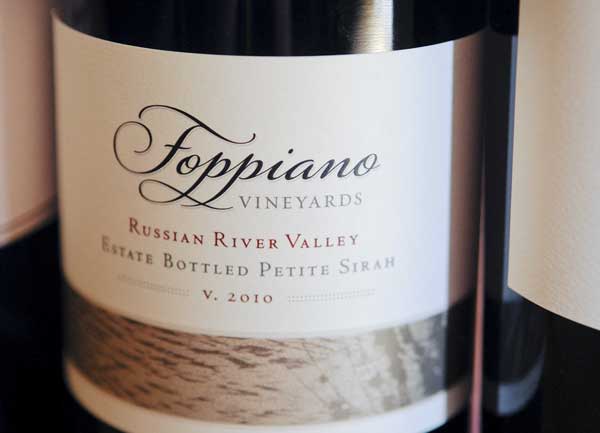
It certainly is embracing and easy to consume. A dark, sweet scent arises from my glass. Very ripe cherries. Instructions for making this wine could be: take you most ripe berries, but don’t worry, you will not lose structure. Maybe not the most complex wine on the market, but high marks on drinkability. Petite sirah has in some way presented itself as something other than chardonnay, pinot noir and cabernet. A nice wine, I am glad I got the chance to try it. (Systembolaget 6277, 139 SEK / ~15 euro)
Wine 4: 2010 Rodney Strong Sonoma County Cabernet Sauvignon
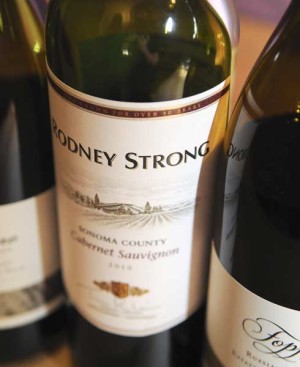
This wine has a little bit of merlot in it and a little bit of malbec. For this range of cabernets that the winery produces the object is to find something that is true to Sonoma county and fairly soft in tannins. This is a wine that is made to be consumed early, not for laying down 20 years. This is something to be enjoyed in restaurants.
I very much enjoyed this wine. Good structure, more solid that the petite sirah. Hints of cedar and wood. Some red peppers appear on top. (Systembolaget 79364, 135 kronor / ~14 euro).
Steve tells us the story of when the cellar was rebuilt, a few years ago. Behind a hidden well they found 1935 cabernet, made the first year after prohibition. Because of troubles getting glass and cork and everything, half was made with whisky screw cap bottles and half with cork. Four out of five with the screw cap tops were perfect. So alive and fresh! Masters of Wine could not believe the wine was so fresh. As for the bottles with cork, probably two out of five were good. “There is a great history of Californian wines aging very well, but there is not that many people who have had the opportunity to try it, since we tend to drink it all…”, said Steve.
Wine 5: 2010 Rodney Strong Knotty Vines Northern Sonoma Zinfandel
The Zinfandel concludes the official tasting. It is made from vines planted in 1914, so almost a hundred years this year. I find this wine more open than the cabernet, more accessible. A bit of “mothball” again, maybe a wee bit too much. But apart from that a very good wine. All that you are looking for in a Californian cabernet: the fruit, the ripe berries, yet with structure. A bit spicy, too. (Systembolaget 79365, 145 kronor / ~16 euro)
As Steve puts it, “in California, this is our pizza and pasta wine. In the rest of the world, it is Chianti Classico. We have Zinfandel.”
Bonus wine: 1990 Petite Sirah.
No tasting without bonuses or dark horses! Behind a hidden cupboard Steve pulls out a 1990 petite sirah. Ah, this is interesting. Old cellars, mint pastilles, my mind wanders off to Italy and a mature Barolo. Very, very good! I’m buying a case and putting away!
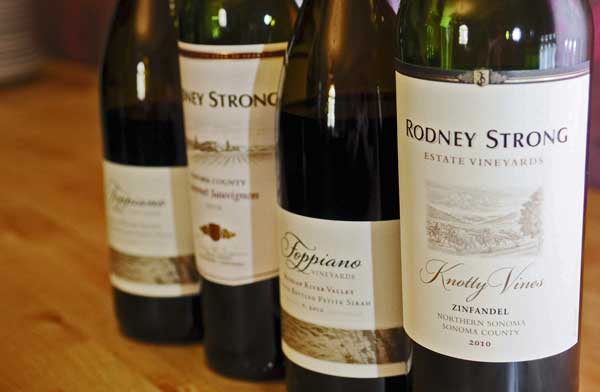
Then, after the tasting, lunch is served. We are offered prime rib of Wagy, and with that sauce béarnaise, green beans and grilled tomatoes. Superb!
Many thanks to Steve Messinger and to the rest of the crew at Domaine Wines for sharing the story and philosophy of the Rodney Strong and Foppiano wineries along with letting us taste the wines. Very interesting and best of luck!
Post script: On the trail of you know what!
On a more personal level, I would like to add that being at a Californian wine tasting brought back memories of my own Californian wine tasting experience. Some five years ago I accidentally stumbled across the Sideways trail, when a friend and I did a week in California. It must have been April 2008.
My friend was there on business and I joined him to get some time off work. Needless to say, of course we did the whole shebang: Driving across the Golden Gate Bridge. Eating a thirty-five dollar breakfast at a local diner. Gazing at the redwoods at Muir. Driving the coastal highway from SF to LA. Stopping at Big Sur. Eating crappy food at Fisherman’s Warf. Eating even more crappy food at Venice Beach. And eating the crappiest food of them all at Hollywood Boulevard.
All this in addition to trying to look as cool as possible at Long Beach, having a hard time coping with the American version of “coffee” and “breakfast” and trying NOT to speak English with too much British accent. Everything but Alcatraz, mind you. I saw the place back in the early eighties and frankly it isn’t much of a sight. An island, some buildings, lots of cells and lots of tragedy. The movies do a better job.
Anyway, while my friend was busy trying to get as rich as possible down in LA I suddenly became aware that much of the story in the film Sideways takes place just north of Los Angeles, centring around the town of Los Olivos, in the Santa Ynez Valley.
I just had to go there.
The town of Los Olivos is a very quiet place, mostly one story buildings. People tended to walk slowly. Smiling. I parked the rental car and grabbed some lunch at a salad bar, sitting down at a table outside. Halfway into my chicken sandwich I saw that just across the street – just across the street! – was the restaurant where Miles had cried out his “if anyone orders merlot, I’m leaving. I am not drinking any f***g merlot!”
I wolfed down the last of the sandwich and ran across to the restaurant. It was open, so I entered. The walls were covered with bottles. The air was cool, friendly, relaxed, yet strict. A classy restaurant. I went to the bar where I was greeted by a young waiter with a big smile. She asked if I wanted to try something. Of course! All those bottles! Which to try? I settled on buying a pinot, but just as I was about to ask for their best, or at least a very good pinot, I remembered that Californian pinots tend to be too fruity.
So with the best fake British accent I could do, and in a voice of course, I declared: “I’m European. Do you have any pinots with like no fruit?”
The girl, understanding my joke, smiled ear to ear and said, “I’m sure we can find some.”
Ulf Bengtsson writes about wine under the pseudonym Red Scream on his blog Red Scream and Riesling, on wine, food, photography and other things that are important in life. Like detective novels, taking long walks in Stockholm and the occasional burst of exercise. He is also on Facebook.
[box type=”info” style=”rounded” border=”full”]Currently California is one of the (few) wine regions that BKWine does not offer wine tours to. But if your desire goes to some other wine region, then you can contact BKWine to discuss a wine and food tour that will be a unique experience! Travel with the wine experts![/box]


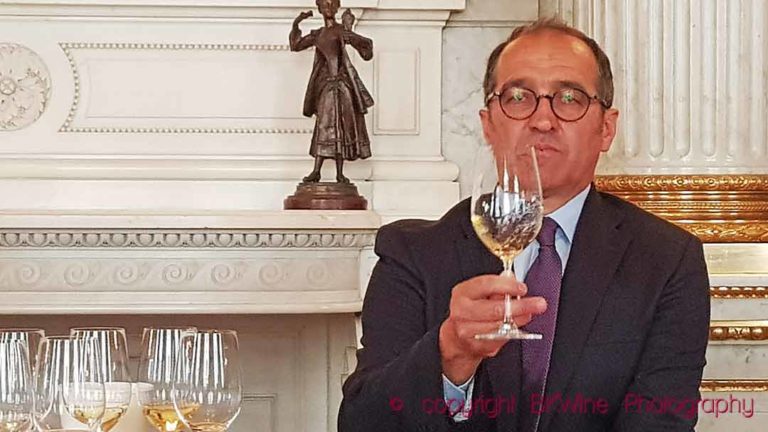
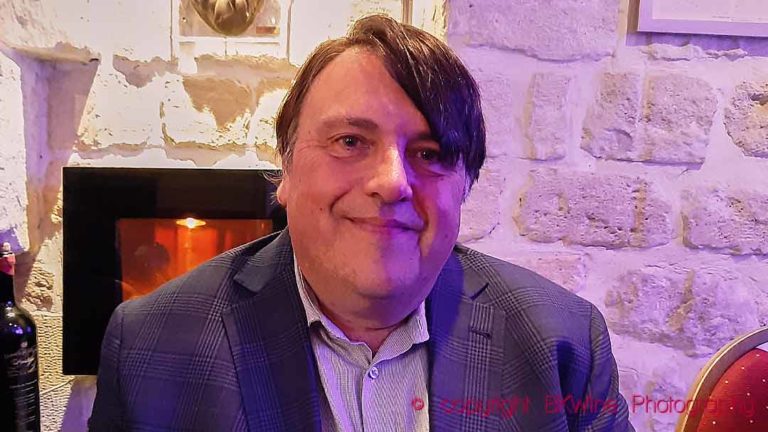
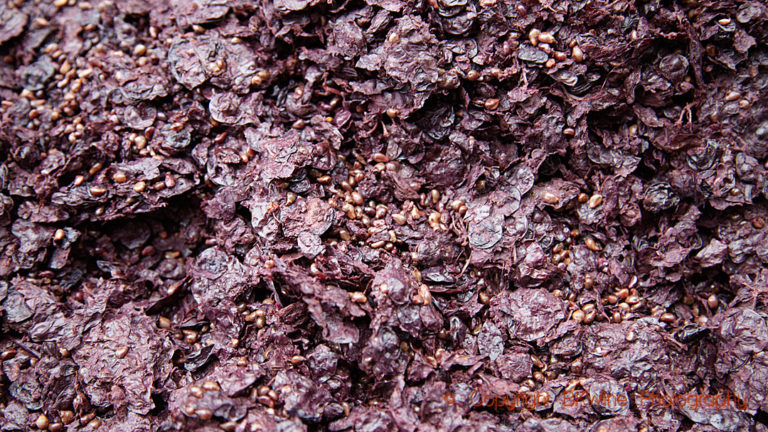




2 Responses